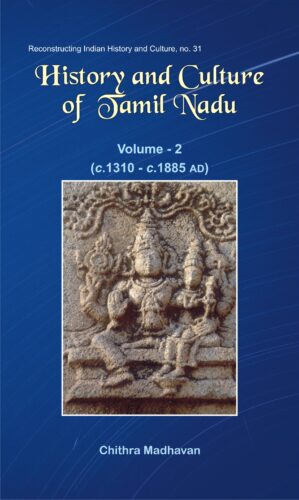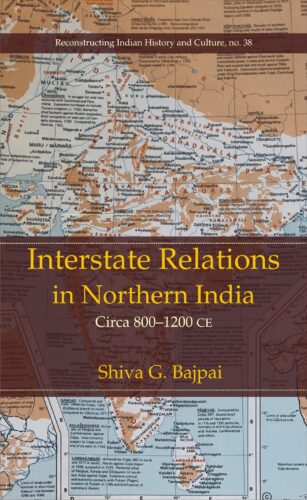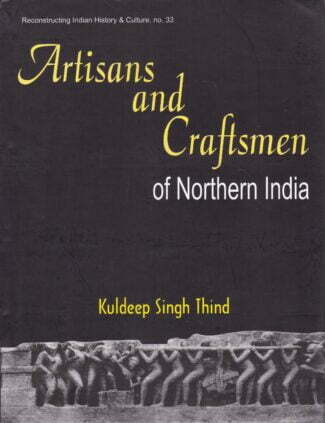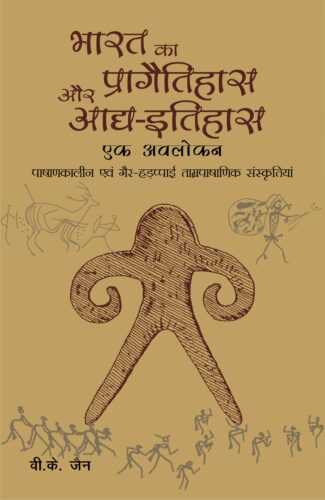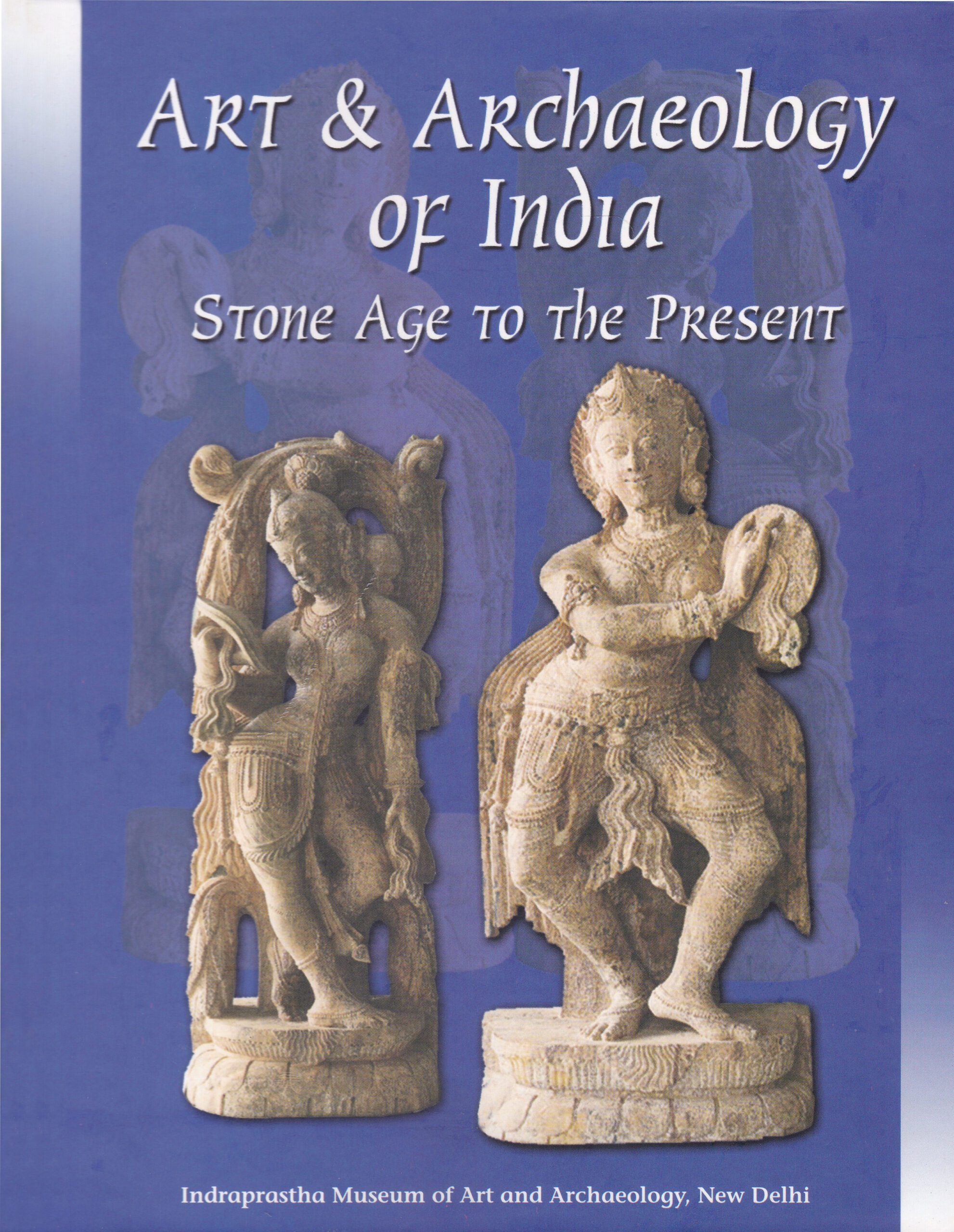

History of Jainism (...
History of Jainism (3 Vols set)
by: Kailash Chand JainThis book, presented in three parts, surveys the history of the Jaina dharma, its expansion under the Mauryas and Kharawelas, its nourishment by Cauhana, Paramara, Calukya, Rastrakuta and Ganga Kingdoms, its profound influence on life in India, particularly during the middle ages, and its survival during the Muslim rule.
Original price was: ₹4,500.00.₹4,050.00Current price is: ₹4,050.00.
ISBN: 9788124605479
Year Of Publication: 2010
Edition: 1st
Pages : xxix, 1283
Bibliographic Details : 1 folded Map, 24 b/w photographs, Bibliography, Index
Language : English
Binding : Hardcover
Publisher: D.K. Printworld Pvt. Ltd.
Size: 23
Weight: 2500
History of Jainism has been presented here in three parts. The first part tries to prove through the archaeological and literary sources the historicity of Tirthankara, Parshvanatha and Mahavira, explaining their life and education besides religious, political, social, artistic and literary conditions of their times.
The second part surveys the history of the Jaina dharma, its expansion and significance. The effects of Jaina dharma increased when Mauryas were ruling Magadha and Kharawelas ruled Orissa. No doubt, the period from the ninth to twelfth centuries ce was a golden time in the history of Jainism and even traders, labourers and craftsmen were highly influenced by it during Kushana period. Seen geographically, Cauhana, Paramara and Calukya were acting as watchmen for Jainism in the north, and in the south it was being nourished by Rashtrakuta and Ganga (Kingdoms). Many Jaina temples were constructed, and monuments erected in honour of their deities. This part illustrates the many ways in which Jainism was served by the Jaina monks, saints, scholars and the politicians and answers questions such as: What kind of religious and social unions were made after the division and what were their traditional characteristics? How were the different leagues and monasteries of Jaina sages made? What was the lineage of various castes and how it originated?
The third part, associated with the middle ages of Jainism, describes that even though there was Muslim rule, still many organizations were sponsored with the influence of Jainism. Truthfully, there was a decline in Jainism during the middle ages but it remained protected. Many pilgrimages and historical places were established with the great influence of Jainism. Dr A.H. Nizami has written here about the Muslim reign, conditions of Jainism and also about the admirable Jainas. Dr Surendra Gopal has described the social and financial conditions prevailing during this period. Dr Shyam Sunder Nigam has penned on the Middle Ages of India and Dr Prakash Chandra Jain has written about the Jaina religion in the Middle Ages in Malwa region.
This monumental work will be a treat for the minds and eyes of people curious about Jainism.
Special Note
Preface
Maps
Volume I
Jainism Before and in the Age of Mahavira
1. Jainism before Lord Mahavira
Jaina Religion as Eternal — Archaeological Evidence to Ascertain the Truthfulness of the Jaina Traditions — The Theory of 24 Tirthamkaras — Rishabha as Founder of Jainism — Arishthanemi or Neminatha as Tirthamkara — Jainism as a pre-Vedic Religion — Parshvanatha as a Historical Figure — Archaeological Cultures
2. Sources
Mahavira Age
Post-Mahavira Age
3. Life of Lord Mahavira
His Clan — His Birth and Parentage — Birthplace — Childhood — Life of a Householder
His Ascetic Life: His Twelve Years of Preparation
Mahaviras Penance in a Cemetery at Ujjain — Kevala-jnana — First Sermon — Eleven Disciples (Ganadharas) — Four Orders of the Jaina Community (samgha) — Places of Rainy Seasons (Caturmasa) — Influence on Lay-Followers (Shravakas) — Royal Patronage — Mahavira and the Buddha — Schisms — Nirvana — The Theory of Mahaviras Nirvana in 467 bce — 477 bce — 484 bce — 486 bce — 488 bce — 490 bce — 498 bce — 545 bce — 437 bce — Criticism of the above Theories — The Theory of Mahaviras Nirvana in 527 bce — Personality
4. Teachings of Mahavira
Nirvana — Right Faith (Darsana), Right Knowledge (Jnana), and Right Conduct (Caritra) — Austerities — Five Vows (Vratas) for the Ascetics — Doctrine of the Nine Categories or Truths (Nava Tattva) — Theory of Karma — Six Lesyas — Doctrine of Nayas — Exertion of Righteousness — The Four Requisites — Impurity — Death Against (and with) Ones Will — On Discipline — Actions of Ignorant and Wise Men — Vanity of Worldly Pleasures — The Causes of Carelessness — Sinful and Wicked Deeds — Hells — A Gloomy View of the World — Real Brahmana — Code of Conduct for Ascetics — Discipline — On Troubles — The Leaf of the Tree — The True Monk — The Ten Conditions of Perfect Chastity — Bad Monks — Duties of a Monk — The Samitis and the Guptis — The Correct Behaviour of Monks during the Several Parts of Day and Night — Mode of Life — The Houseless Monk — Begging Food — Modes of Speech — Walking — Begging Clothes — Begging for a Bowl — Spot Where One can Ease Oneself — Other Miscellaneous Acts
5. Age of Mahavira
Lord Mahaviras Religious Contemporaries and Contemporary sects
Other Schools and Sects
Vedic Pantheon and Religious Practices
Political Conditions
Political Institutions
Social Conditions
Social Organization
Slavery — Orders or Stages of Life — Family Life
Marriage
The Courtesans — Food and Drink — Dress and Ornaments — Furniture and Utensils — Festivals and Games
Economic Conditions
Forest Tracts
Arts, Crafts, Professions and Industries
Trade and Commerce
Oversea Trade
Organization of Trade and Industries
Coinage
Prices — Fees and Salaries — Loans and Interest — Weights and Measures
Art and Architecture
Education, Literature and Sciences
Vedanga Literature
Index
Volume II
Historical Survey and Spread of Jainism
6. Historical Role of Jainism
The Nandas (c. 364-324 bce) — Account of the Greek Writers of Western India — The Mauryas (324-187 bce) — The Shungas (187-75 bce) — Pushyamitra (c. 187-151 bce) — Spread of Jainism — The Cedi (Maha-Meghavahana) — Dynasty of Kalinga (Orissa) — Murundas — Tamil-desha — Mathura Region (Surasena Janapada) (c. 208 bce — ce 200) — Avanti, Maharashtra and Saurashtras — The Satavahanas — Foreign Invasions, Gandhara Janapada and Others (i.e. 250 bce Ý c. ce 300) — The Guptas (c. ce 300Ý500) — Post-Gupta Period — Account of Hieun-Tsang (Yuan Chwang) — Record of the Muslim Visitors about Jainism in Western India — Deccan (c. ce 300-600) — The Gangas of Talkad — The Kadambas (c. ce 340-600) — Western Calukyas of Vatapi (Modern Badami) — North India (c. ce 800-1200) — The Imperial Pratiharas — Badagurjara Pratiharas of Rajorgarh — The Cahamanas — Under the Cauhanas — The Cauhanas of Candravada — The Paramaras — The Calukyas — The Rathoras of Hathundi — The Yaduvamshi or Surasena kings of Bayana or Shripatha — The Tomaras of Delhi — The Kalacuris — The Candelas of Jejakabhukti (Bundelkhand) — The Kacchapaghatas — The Palas and the Senas of Bengal — Keshari Dynasty of Orissa — Punjab, Himachal Pradesh and Haryana — Jainism During the Reign of the Rashtrakutas — The Pallavas — The Imperial Colas — The Pandyas of Madurai — The Western Gangas — The Later Calukyas — The Western Calukyas — The Shilaharas — The Hoyasalas of Dvarasamudra — Feudatories and High Officials — The Kakatiyas of Warangal — The Kalacuris of the South — The Yadavas of Devagiri — Colonial and Cultural Expansion in South-East Asia — The Age of Conflict — The Delhi Sultanate (ce 1200-1400) — The Slave Dynasty — The Khaljis (ce 1290-1320) — The Sultans of Mandu — The Muslim Rule in Gujarat (Fourteenth-Fifteenth Century ce) — During the Fourteenth-Fifteenth Centuries — The Vijayanagara Kingdom — The Moguls — Shravaka Dharma or Shravakacara
7. Jaina Monks, Statesmen and Shravakas
Jaina Monks
Jaina Statesmen
Shravakas
Karma Shaha
8. A Brief Historical Survey of Jainism and its Contributions to Indian Culture
A Brief Historical Survey of Jainism
Jainism during Gupta Period (c. ce 319-700)
The Kacchapaghatas, Later Pratiharas and Yajvapalas
Jainism under the Sultans of Mandu (ce 1401-1500)
Contributions of Jainism to Indian Culture
9. Religious Divisions In the Time of Mahavira
Shvetambaras and Digambaras
Samgha, Gana and Gaccha
Gana in the Kalpa-Sutra and Kushana Inscriptions of Mathura
Digambara Samghas, Ganas and Gacchas of the South Nirgrantha Mahashramana Samgha
Shvetambara Gacchas of North India during Medieval Period
Digambara Samghas, Ganas and Gacchas in the North During the Medieval Period
Jaina Bhattarakas
Caityavasi System in Rajasthan
Minor Protestant and Non-Protestant Sects
10. Social Divisions
Jaina Castes and Gotras of Rajasthan
Regional Gotras
Occupational Gotras
Tittles and Surnames
Gujarat
Madhya Pradesh
Uttar Pradesh
Maharashtra
Bihar
South India
11. Decline and Survival of Jainism
Causes of Decline
Reasons for Survival of Jainism
Observances of Local Practices
Index
Volume III
Medieval Jainism
12. Medieval Jainism
Jaina Culture on the Eve of Turkish Conquest — Jainism as a Religion on the Road to Decadence — Comments — Jaino-Sufic Contacts — Shaikh Hameeduddin Raihani arrives in Nagaur — Homicide of Antyaja Untouchables in Nagaur — Sufi Tarikeen of Nagaur — Jainism in Nagaur — Qualifications of a Renunciant (Tyagi) — Cheetal, the Shaikh of the Times — Sufi Hameeduddin as a householder in Nagaur — Sultan-ut Tarikeen and Vegetarianism — Relations with non-Muslims — Sufi Music (Qawwali or Shama), i.e. Audition — Shaikh Fariduddin alias Chakparran — Shaikh Ahmad Khattu of Khatu — Ahimsa — Jaina-Sultanate Relations — Jinaprabhasuri — Contacts with Muhammad Tughluq — Miracles of Suriji — Criticism and Estimate — Firuz Shah Tughluq — Reaction and Dispute against Image Worship in Jainism — Jina Taran-Taran of Canderi-desha — Jainism in Malwa — Mandogarhe Centre of Shvetambara Jainism — Mandogarh in the Fifteenth Century — Mandavagarh as a Full-Fledged Tirtha
13. Ancient Jain Tirthas and Historical Places
Map 4: Ancient Jaina Tirtha and Historical Site
Eastern India Bihar, Bengal and Orissa
North India (Uttar Pradesh, Delhi Region, Haryana, Himachal Pradesh, Punjab and Madhya Pradesh)
Uttar Pradesh
Delhi Region
Haryana
Himachal Pradesh
Punjab
Madhya Pradesh
Rajasthan
Gujarat
Maharashtra
South-India (Karnataka, Andhra Pradesh and Tamil Nadu)
Karnataka
Andhra Pradesh
Tamil Nadu
14. Bhattaraka Sampradaya
Mulasamgha
Canderi Patta
Nature of Jainism in Deogarh
Kashthasamgha
Gunakirti (1403-24)
Yashahkirti (1429-53)
Jainism in the Tomara State of Gwalior (Fifteenth Century)
Tomara rulers of Gwalior
Conclusion
Appendix
15. Economic Life of Jains in Medieval Times
16. Social Life of the Jaina
Sources — Demographical Spread — The Structure of the Community — Caste System — Jainas and Hindus — Intersectarian Tension — Education — Jaina Writings — Jaina Contribution to Vernacular Literatures — Book Depositories — Status of Women — Social Responsibility
17. Jainism in Medieval India (ce 1300Ý1800)
Jainism vis-
-vis or vs. Delhi Sultanate — The Sultanate of Gujarat and Malwa — Digambara Sect — Shvetambara Tradition — Jainism During the Mogul Period — The Rajput States of North India — The Tomars of Gwalior — The Rajput states of Rajasthan — Brief Political History of Rajasthan — The Cahmana Rule — Rathod States — The Bhati Rule of Jaisalmer — Alwar State — Kacchawaha Rule in Amer (Jaipur) — South India — Shape/Form of Later Mediaeval Jainism — The Digambara Sect — The Bhattaraka Sect — The Mulasamgha — Senagana — Balatkaragana — Karanja Branch — Latur Branch — Later Balatkaragana Branch — Delhi-Jaipur Branch — Nagaur Branch — Idar Branch — The Ater Branch — The Surat Branch — The Jerhat Branch — The Kashthasamgha — The Mathuragaccha — The Ladwagaccha — The Nanditatagaccha — The Shvetambara Sect — The Tapagaccha — The Kharataragaccha — The Lonka Pantha — Epilogue
18. Political History of Medieval Malwa and Jainism
Political Background — Jainism during the Reign of the Sultans of Malwa — Hoshang Shah Ghori — Mohammad Shah Ghori (1435-36) — Mahmud Khilji I — Gayasuddin Khilji (ce 1469-1501) — Nasiruddin Khilji (ce 1500-11) — Mahmud Khilji II (ce 1511-31) — Jainism during the Mogul Period in Malwa — Jaina samghas, Ganas and gacchas in Malwa — Kashthasamgha — The Shvetambara Sect — Tapagaccha — Brhad Poshadha-Shalika Tapagaccha — Laghu Poshadha Shalika Tapa Paksha — Kharataragaccha — The Sthanaka Way of Life
The Digambara Jaina Castes of Malwa
The Shvetambara Jaina Castes
Gotras
Bibliography
Index







